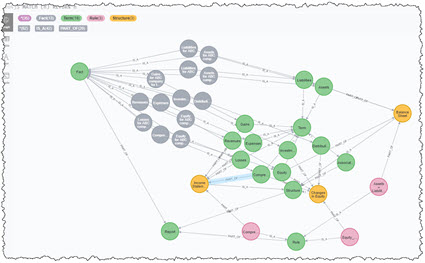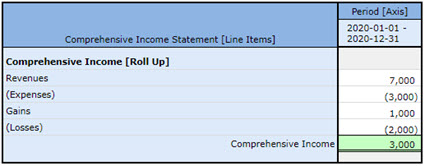BLOG: Digital Financial Reporting
This is a blog for information relating to digital financial reporting. This blog is basically my "lab notebook" for experimenting and learning about XBRL-based digital financial reporting. This is my brain storming platform. This is where I think out loud (i.e. publicly) about digital financial reporting. This information is for innovators and early adopters who are ushering in a new era of accounting, reporting, auditing, and analysis in a digital environment.
Much of the information contained in this blog is synthasized, summarized, condensed, better organized and articulated in my book XBRL for Dummies and in the chapters of Intelligent XBRL-based Digital Financial Reporting. If you have any questions, feel free to contact me.
Entries from July 1, 2020 - July 31, 2020
Negative Attitudes and the Four Horsemen of the Data Apocalypse
As described by Robert S. Seiner in All in the Data: Negative Attitudes and the Four Horsemen of the Data Apocalypse, the four horsemen can be used to describe the negative attitudes organizations have toward data that have prevented these organizations from addressing the need to improve and gain value from their most valuable asset.
Here are those negative attitudes (the four horsemen) explained in a bit more detail:
- Ignorance: The ignorance attitude can be best described as thinking that seeking value from data is not that important.
- Arrogance: The arrogance attitude can be described as the thinking that management knows more than the people that own and are responsible for the data.
- Obsolescence: The obsolescence attitude can be described as thinking that the present data, in the present systems, will never die and that, if it carried the organization this far, and there is no reason to change.
- Power: The power attitude can best be described as the feeling that projects owned by the most influential members of management are more critical than other projects.
You can watch the presentation referred to in the article here on YouTube.com.
Understanding Digital
Financial reporting is a system that is comprised of many interconnected parts. Today, many of these interconnections are missed because too many people look at financial reporting systems as silos of functionality. Understanding Digital helps readers understand these interconnections, describes those interconnections, and explains how to use XBRL formatted information to physically represent those interconnections in machine-readable form.
This is a small example of a financial report. Notice that everything is connected to other things:
 (Click image for larger view)Using the information above, software can transform the information into something more useful to humans that looks like this:
(Click image for larger view)Using the information above, software can transform the information into something more useful to humans that looks like this:
 (Click image)No magic. Everything is driven by carefully crafted machine-readable information like this.
(Click image)No magic. Everything is driven by carefully crafted machine-readable information like this.
Conscious Capitalism
A Financial Times Article, Companies must include environmental and social performance measures, discusses the notion of "impact weighted accounts" or impact reporting or integrated reporting or sustainability reporting or triple bottom line.
Essentially, "performance" is redefined from short-term financial performance such as quarterly earnings to performance which includes long-term and societal considerations such as providing good jobs, paying responsible tax, finding innovative ways to solve pressing issues such as climate change, and producing products that truly benefit customers.
Many different organizations are working on this idea including SOPACT, SASB, GRI, HBS, The Reporting Exchange to name a few.
Clearly this information should be reported in machine-readable form such as XBRL.
NEO4J
Neo4j is a graph database. Here is a 50 minute introduction to Neo4j. Here is a series of videos for learning Neo4j. You can download Neo4j here. Here is information on the cypher query language.
Here is a browser-based implementation.
This is the best Neo4j tutorial that I have run across so far.


